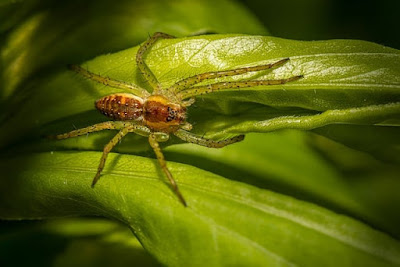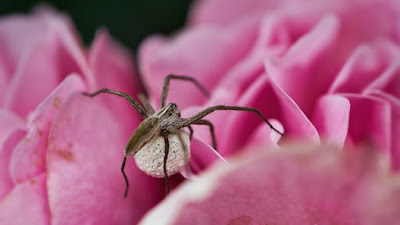The camel spider, scientifically known as Solifuge, is a mysterious spider that has fascinated and terrified people for generations. Often surrounded by myths and misconceptions, this creature is shrouded in mystery and has been the subject of many sensational stories. In this article, we'll explore the true nature of the camel spider, its characteristics, behavior, and its role in the ecosystem.
Form and physical characteristics
Camel spiders are not true spiders; They belong to the order Solifugae, a distinct group within the class Arachnida. These arachnids are found in various regions around the world, most of which live in dry, desert-like environments. Known for their impressive size, camel spiders can grow up to 6 inches in length including their long legs.
One of the camel spider's most distinctive features is its powerful chelicerae, which are sharp mouthparts used to crush and chew its prey. Although these chelicerae may look intimidating, it is important to clarify that camel spiders are not venomous and do not pose a significant threat to humans. Instead, they rely on their strong jaw muscles to capture and devour their prey.
Behavior and diet
Camel spiders are opportunistic hunters, and their diet consists mainly of insects, other arachnids, small reptiles, and even small mammals. Contrary to popular belief, there is no evidence to support the claim that camel spiders eat human flesh. These arachnids are not aggressive towards humans and generally avoid contact whenever possible. When threatened, they may adopt a defensive stance by standing on their hind legs and displaying their fearful chelicerae, but this is only a bluff and not an act of aggression.
Camel spiders are well adapted to their desert habitats, where they are primarily nocturnal. They go hunting at night, relying on their extraordinary speed to catch their prey. They are incredibly fast runners, capable of reaching speeds of up to 10 mph, making them difficult to capture and study.
Over the years, many myths and urban legends have circulated about camel spiders, often exaggerating their size, behavior, and danger to humans. Some common misconceptions include their ability to leap incredible distances, their venomous nature, and their preference for attacking camels. It is necessary to dispel these myths in order to better understand the true nature of these fascinating creatures.
Camel spiders and humans
While camel spiders prefer to avoid humans and are generally harmless to people, their presence has sometimes given rise to exaggerated stories and fear among soldiers stationed in desert areas. Stories of camel spiders leaping on the faces of sleeping soldiers have become legendary, but they are largely the result of exaggeration and misunderstanding. They are attracted to dark, cool places and may unknowingly seek shelter in bedrooms, but their presence is rarely a cause for concern.
Conservation status
As of my last update in September 2021, there were no known conservation concerns specifically related to camel spiders. They are widespread in their natural habitats, and their population dynamics are relatively stable. Still, it's important to remember that all living creatures play a role in their ecosystems, and the camel spider is no exception.
Camel spiders are interesting and often misunderstood arachnids that have captured the attention of people around the world. Although they have remarkable adaptations to survive in the harsh desert environment, they are not the formidable and dangerous creatures portrayed in sensational stories. It is essential to separate fact from fiction, as promoting misinformation can create undue fear and even contribute to the downfall of these important creatures.
As we continue to explore and understand the natural world, let us approach each species with a spirit of wonder and curiosity, striving to uncover the truth behind myths and misconceptions. In doing so, we can cultivate a deeper appreciation for the fascinating creatures that exist on our planet.
20 facts about camel spiders:
- Camel spiders are scientifically included in the class Solifugae. They are arachnids and not spiders.
- They are found in dry and desert-like environment of different states and countries.
- Camel spiders are about 6 inches long, including their legs.
- Their strong chelicerae help them to catch and eat their prey. They are not volcanic and are not toxic.
- Camel spiders have four legs, two of which are reach legs.
- They are active in activities during the night and hide during the day.
- Camel spiders are famous for their fast running ability and the velocity is around 10 miles per hour.
- Their back legs help them hold their prey in order to eat them.
- Camel spiders have good eyesight, which allows them to identify their prey.
- They can switch their legs to hunt and move quickly.
- Camel spiders have a varied diet and their thirst is quenched by small insects, animals, and small reptiles.
- They do not have the ability to bite the skin of humans, as many myths claim.
- They display their chelicerae to intimidate the camel spider, which is most of the time an intimidating behavior and not for defense.
- They do not have the luminous consciousness that gives them the ability to make sounds or run away.
- Camel spiders are highly technical compared to their body and nature and they are highly adapted to their environment.
- They are adept at conducting their activities at night and use the night life to protect them.
- Camel spiders have the ability to rotate each leg in different directions, enabling them to spin and run.
- They have incredible skill in making their own deep burrows in their desert environment.
- Due to the vacuum applied in Camel Spider's legs, they are stuck in Bootarth with Vaishali consciousness, so they cannot search for water.
- The camel spider's injection of cayenne pepper oil on its bite is used on humans to temporarily render them unconscious and to transport them. It is a discreet solution that solves their problem without causing harm.



Comments
Post a Comment